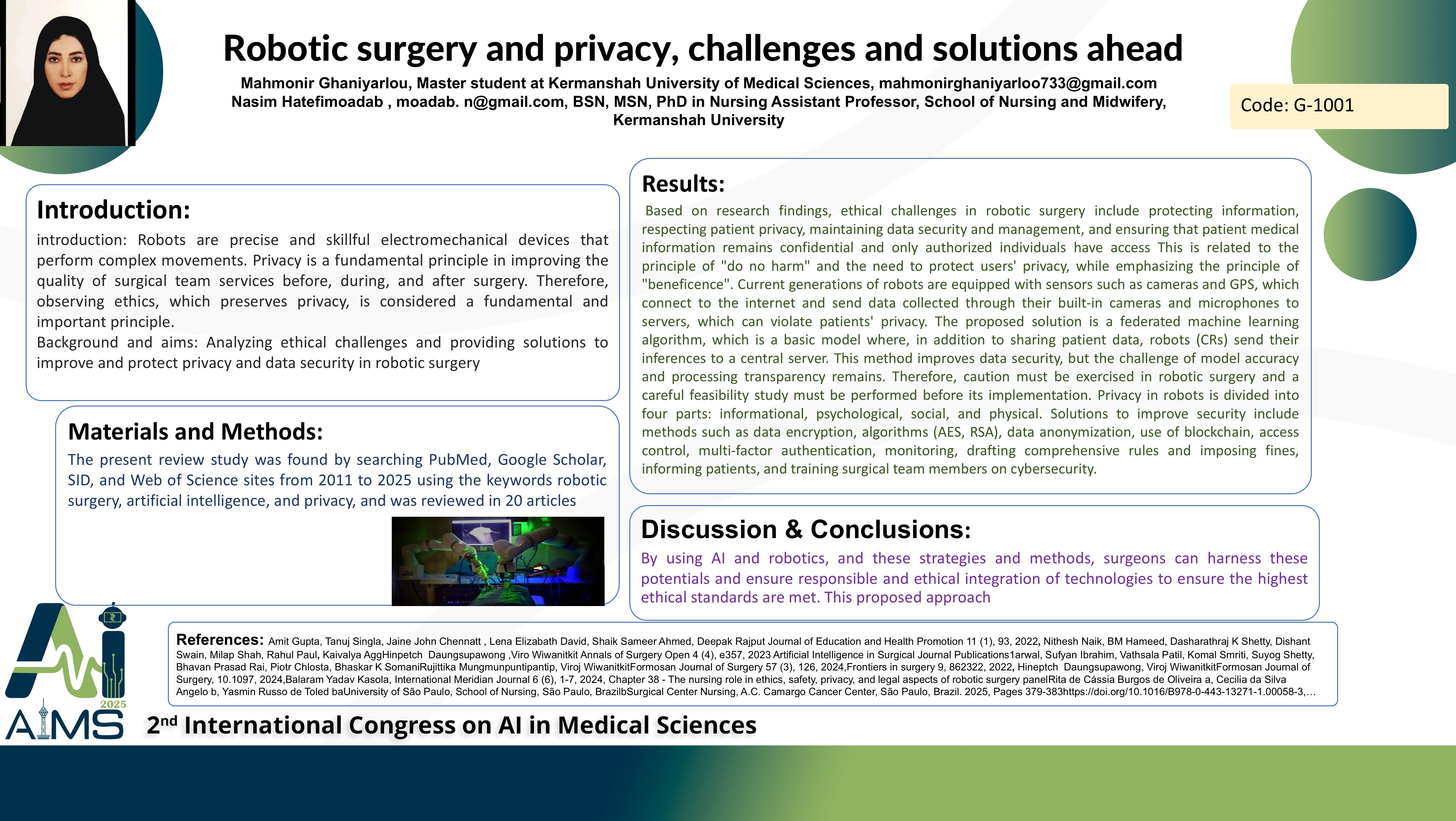Robotic surgery and privacy, challenges and solutions ahead
Code: G-1684
Authors: Mahmonir Ghaniyarlou * ℗, Nasim Hatefi Moadab
Schedule: Not Scheduled!
Tag: Robotics in Surgery and Care
Download: Download Poster
Abstract:
Abstract
introduction: Robots are precise and skillful electromechanical devices that perform complex movements. Privacy is a fundamental principle in improving the quality of surgical team services before, during, and after surgery. Therefore, observing ethics, which preserves privacy, is considered a fundamental and important principle. Background and aims: Analyzing ethical challenges and providing solutions to improve and protect privacy and data security in robotic surgery Method: This review study was conducted through a search of PubMed, Google Scholar, SID, and Web of Science sites from 2011 to 2025, examining 20 articles with the mentioned keywords. Results: Based on research findings, ethical challenges in robotic surgery include protecting information, respecting patient privacy, maintaining data security and management, and ensuring that patient medical information remains confidential and only authorized individuals have access This is related to the principle of "do no harm" and the need to protect users' privacy, while emphasizing the principle of "beneficence". Current generations of robots are equipped with sensors such as cameras and GPS, which connect to the internet and send data collected through their built-in cameras and microphones to servers, which can violate patients' privacy. The proposed solution is a federated machine learning algorithm, which is a basic model where, in addition to sharing patient data, robots (CRs) send their inferences to a central server. This method improves data security, but the challenge of model accuracy and processing transparency remains. Therefore, caution must be exercised in robotic surgery and a careful feasibility study must be performed before its implementation. Privacy in robots is divided into four parts: informational, psychological, social, and physical. Solutions to improve security include methods such as data encryption, algorithms (AES, RSA), data anonymization, use of blockchain, access control, multi-factor authentication, monitoring, drafting comprehensive rules and imposing fines, informing patients, and training surgical team members on cybersecurity. Conclusion: By using AI and robotics, and these strategies and methods, surgeons can harness these potentials and ensure responsible and ethical integration of technologies to ensure the highest ethical standards are met. This proposed approach
Keywords
Robotic Surgery, Privacy, Artificial Intelligent
